Photos: Andrew Goff
‘A fucking
death wish’
The day she died, Paula Moon-Sylvia planned to make cheeseburgers for herself and her nephew at her Weitchpec home. Her nephew took a nap and went looking for his aunt when he woke up. He found her body, dead from a fentanyl overdose with methamphetamine toxicity on Nov. 8, 2021.
Moon-Sylvia, 46, had contacted her dealer James Williamson two days earlier via Facebook Messenger. Court documents record Williamson’s offer of “fet and raw” while asking “how much cash do u have?”
Williamson boasted that his “raw” (heroin) was “superior,” according to documents filed in a the dealer’s Humboldt County court case. He was selling it for $200/gram.
“I have a lot of fet tho,” he messaged Moon-Sylvia. “But idk if u like that shit. I don’t touch it which is why I’m selling it.”
“I do,” she messaged back. “Do you know where to sell any pounds of weed?”
“Ok so which do u want? My grams of fet are 170 so lemme do the math real fast.”
Williamson delivered $20 worth of fentanyl to Moon-Sylvia’s house, a tiny amount the size of a few grains of salt, on Nov. 7. A toxicology report found that Moon-Sylvia’s blood contained a fentanyl concentration of 8.7 nanograms per milliliter, which is often a fatal dose when other drugs are present. Moon-Sylvia’s blood had a 0.56 milligrams per liter concentration of methamphetamine. Humboldt coroner pathologist Neil Kushner called the death a fentanyl overdose with meth toxicity.
In interviews with police, Williamson said he wouldn’t have given her fentanyl if she had not reassured him that she’d taken it before.
“Everyone knows the dangers of fentanyl,” he told police. “It is all over the news.”
He repeated to police that he doesn’t do fentanyl.
“Anybody who does it, I feel like, has a fucking death wish,” Williamson told police, who relayed the dealer’s sentiments in court.
Williamson pleaded guilty to involuntary manslaughter for selling Moon-Sylvia the fentanyl.
In October, Williamson was sentenced to the time he’d served plus nine days plus a year and five months of mandatory supervision.
“I’ve never been more remorseful for anything in my life,” Williamson told Moon-Sylvia’s family at his sentencing.
Last week in Humboldt: Seven deaths in seven days
It’s been another record-breaking year for fentanyl overdoses in Humboldt with at least 60 deaths to date, up from around three dozen in 2021. The week after Thanksgiving, the sheriff’s department saw seven overdose deaths in seven days. Fentanyl is suspected in all these deaths, says Humboldt County Sheriff Billy Honsal in a Dec. 5 interview, though he says toxicology reports that confirm fentanyl take a month to process.
“The sheriff’s office and the sheriff’s coroner is seeing staggering overdose rates and overdose deaths from fentanyl,” Honsal says. “What we once saw was opioid epidemic with heroin primarily has now shifted to primarily fentanyl. Fentanyl deaths are sky high.”
Candy Stockton, Humboldt County’s new health officer as of July, says Humboldt’s fentanyl overdoses transcend demographics. The youngest overdose death this year was a 19-year-old. The oldest was 74.
“It crosses that entire range,” Stockton says. “The vast majority of people die in their homes. They are not homeless. They are not the people you think they are.”
Because it’s cheap and relatively easy to manufacture, the synthetic opioid is turning up everywhere, in meth, cocaine, heroin – and in fake pills that can look like legit pharmaceuticals including Xanax, Oxycontin, Vicodin or Adderall.
“People are stamping controlled substances to make it look like different pills, Vicodin being a prominent one,” Honsal says. “These aren’t pharmaceutical companies that are manufacturing them. They’re being made in basements and backyards and garages. You’re getting a variety of different dosages. What may or should contain 2 grains may get 3 or 4. … People can easily overdose.”
Fentanyl is potent stuff, up to 50 times stronger than heroin and 100 times stronger than morphine. The amount that contributed to the death of Moon-Sylvia, the Weitchpec grandmother, was equivalent to a few grains of salt.
But the pills, the fake pills. If you stop reading this now, please know that the pills Honsal described are killing young people, inexperienced drug users, who likely don’t know what they’re ingesting.
I know there are many worries on your list right now. Please make room for this one.
This year, the DEA launched a “One Pill Can Kill” campaign after its labs found that six out of every 10 fentanyl-laced fake prescription pills analyzed in 2022 contain a potentially lethal dose of fentanyl. That’s up from four out of 10 in 2021.
To date, the county health department and sheriff’s office say there’ve been no fentanyl overdoses in Humboldt’s K-12 schools. K-12 teachers are being trained to use Narcan, also known as Naloxone, an opioid antagonist nasal spray.
Stories of young people dying from accidental fentanyl poisoning deaths in California read like nightmares. Here are three of many:
- Fourteen-year-old Alexander Neville died in Aliso Viejo on June 23. Neville thought he was addicted to Oxycontin when he was actually taking fentanyl, reports the Los Angeles Times. This is from his obit: “He self-medicated due, in some part, to the fact that he did not realize how much he was loved by everyone who came into contact with him.”
- Also in the Times, 15-year-old Melanie Ramos died in September in Hollywood after she took a fake Percocet that turned out to be fentanyl.
- Twenty-year-old Talaia Newman died on Nov. 28 in Sacramento of fentanyl poisoning from a fake prescription pill.
In Humboldt, Chad Bernard Holub (McCay) died around lunchtime on Dec. 2. An obituary written by friends describes how the 48-year-old fisherman, farmer and member of Narcotics Anonymous injected what he thought was heroin.
“He inserted a delicate needle between his toes to deliver the immediate ecstasy and relief of heroin — the escape to a pleasant place, to run away from the nothingness of life, the fulfillment of a habit,” the obit explains. “The drug coursed through his veins, expanded a feeling of health and thoughts … then killed him. Dead. Bits of criminal fentanyl were unknowingly mixed in. A killer.”
Good citizens carry Narcan
My son died of an opioid overdose in 2015. Not fentanyl. Just a pill cocktail that his death certificate describes as “combined oxymorphone, oxycodone and clonazepam intoxication.” He was 30. If someone had been with him when he overdosed, they might have been able to save his life with Naloxone, an opioid antagonist medication used to reverse an opioid overdose.
Naloxone – brand name Narcan — is a bandaid, a last-ditch life-saving device. If you come upon an opioid user who has nodded off, who is blue or pale or clammy or vomiting or making gurgling noises or whose heart has slowed or stopped, call 911 and start CPR. If you have Narcan, you might be able to jump start this person’s life.
I’m a Cal Poly Humboldt professor and I’m raising my son’s children, now teenagers.
It could not hurt for me to have some Narcan on hand.
A good citizen can pick up Narcan free at the Community Wellness Center, 908 7th Street, Eureka CA or by calling 707.268.2132. The Humboldt Area Center for Harm Reduction gives out resources including free Narcan to folks in need on Tuesdays and Thursdays.
Naloxone is also available without a prescription at California pharmacies.
I decide to obtain Narcan at a chain drug store in Arcata. The drug store is next to the pet supply store, which sells the live crickets we feed to the teenager’s lizards. Convenient.
I don’t wait in line long.
“I’d like to pick up some naloxone,” I say to a young woman behind the counter. “Narcan.”
“Do you have a prescription?” she asks.
“It’s my understanding that I don’t need one,” I say.
She looks mildly panicked but a coworker comes to her rescue.
“You don’t need a prescription for Narcan,” he says. “But you have to talk to the pharmacist at the consultation window.”
I wait. The consultation window can service two customers side-by-side. It’s not terribly private.
“Who’s here for the naloxone, the Narcan?” a pharmacist asks. I nod and head to the counter.
“You want the nasal spray?” the pharmacist asks.
“Is there another form?”
“No, just the spray.”
“That’s what I want.”
The woman next to me is talking to another pharmacist about her diabetes medication.
My pharmacist asks me for the patient’s name, date of birth, insurance info.
“It’s me. I’m the patient.”
“It’s for you?”
“Yup.” She’s a pro, barely glancing up at me. I’m smiling, thinking about this little tidbit of my personal data zooming off to next-generation server farms that gobble up petabytes of data with ultimate efficiency and vomit them out for marketers and government agencies.
Hi, I’m Deidre, and I carry Narcan.
Good news. My insurance covers naloxone with a $5 copay. It will be ready to pick up in 20 minutes.
That’s plenty of time to buy crickets.
Here’s pharmacist Allyson showing us how to use all kinds of Naloxone
The training video links from Stop Overdose Humboldt website, which also lists how you can pick up free Narcan.
Humboldt sheriff’s war on fentanyl
In April, Humboldt’s Drug Task Force sent officers to scope out the Tenderloin District in San Francisco. This led to the arrest of four people heading back to Humboldt County with cheap fentanyl scores.
In May, Humboldt County’s Board of Supervisors voted unanimously to send a letter to San Francisco District Attorney Chesa Boudin, urging the Bay Area prosecutor to crack down on “open air drug dealing” in San Francisco’s Tenderloin District. Boudin was recalled in June. Brooke Jenkins, who’s pledged to push for more aggressive criminal prosecution, was appointed as interim DA in June and won a special election for the office in November.
Nothing has much changed, though, with open air drug dealing. The Tenderloin is still a hot spot for fentanyl, Humboldt Sheriff Billy Honsal says, along with Sacramento, Redding, other cities.
“Anyone can go down there with a thousand dollars and can buy what they call a sack of fentanyl,” Honsal says. “They come up here, cut it with a cutting agent and sell it on streets and make three, four, five, 10 times more.”
On the East Coast, fentanyl has been found in marijuana. Honsal predicts it’s only a matter of time before an overdose from fentanyl-tainted marijuana happens here.
“It’s very scary,” he says. “This is what’s affecting our community. This is what’s killing our people.”
Honsal describes the accidental death of a 3-year-old in Rio Dell as the youngest fentanyl overdose in Humboldt County. Police guessed the child got into the parents’ fentanyl supply. Honsal doesn’t think the death, about two years ago, was in the news.
“We couldn’t pull a criminal case together,” he says. “And the parents were let go.”
Honsal vows to keep fighting Humboldt’s war on drugs, with fentanyl at the top of the list. That means the Humboldt Drug Task Force will prioritize fentanyl arrests over those for other controlled substances. So if tips come in about, say, a huge shipment of marijuana and another of fentanyl, the Task Force will pursue the latter first.
Part of the deliberate plan to stop fentanyl includes charging drug dealers with murder.
The attempt to charge James Williamson with voluntary manslaughter in the death of Sylvia-Moon was a historic first attempt. The charges were downgraded to involuntary manslaughter by the judge.
What does Honsal consider to be the best way to keep people from overdosing on fentanyl?
“Abstinence,” Honsal says. “Absolutely. We don’t want our community, our kids, trapped in addiction.”
Honsal believes in tough love with regards to substance use. He gives what he calls “the gift of jail” for misdemeanor drug possessions. This gives users a month or two to get sober in jail, he says.
“Not using drugs is the way to stay safe,” he says. “I want to scare every kid into not taking drugs. Try to get high on life. There’s a lot of things to do out there.”
A recently removed encampment in Eureka
Everyone on the street carries Narcan
Amber Bradford has lived in Humboldt since 2013. It’s a balmy Tuesday morning, two days before Thanksgiving. Bradford’s lightly tinted hair is pulled back neatly into a high ponytail. Her ears are pierced three times and she’s wearing cute silver hoops and dangles. She’s wearing a hoodie with The Mandalorian logo, and a green jacket is draped over her arm. She’s fifth in a line of people waiting for various forms of help from the back of the Humboldt Area Center for Harm Reduction van. The program’s clients know each other well. They chat, joke, and occasionally finish each other’s sentences.
Bradford has high praise for the HACHR staff, especially Christina Donnell, the case manager who’s helped Bradford connect with health care and other services.
“Christina goes above and beyond,” Bradford says. “She calls to check in. She’ll help out even on her off hours.”
A woman in front of Bradford turns to add how much “Jami” has helped her, as well. “She drives around some days, helping people in the streets.”
“Yeah, she helps people in the streets first, the girls who work in the streets.”
“And when the Jungle was closing, HACHR tried to help us stop them.”
But there wasn’t enough time, Bradford says, to mount a strong campaign against the efforts to oust campers from their homes. “They threw everyone out on the street again. HACHR helped us carry stuff out.”
Bradford has found a new place to camp. “It is what it is,” she says. She guesses she won’t be there long. “Every couple months, they take all our stuff and burn it. Sometimes it’s every few weeks. Then we have to start all over again.”
Some campers give homeless encampments a bad name by leaving trash all around. “That gives us all a bad name,” she says.
“One bad apple,” adds the man behind Bradford in line.
“But we take care of each other,” she says. “Cuz we have to.”
Bradford is OK with talking to a journalist. She wants the community to know that there are faces and stories to an issue that’s lumped under the huge umbrella of “homelessness.”
She cites an example from a discussion with a community advocate for the homeless. The advocate said, “There are so many of you.”
“As if we’re not separate,” Bradford says. “People need to remember that we’re humans.”
The line moves forward to the HACHR van and a clipboard with a log of clients identified only by their initials. Items on the table include toothbrushes, toothpaste, condoms and lube. On the end of the van are other various useful items including Narcan, the emergency overdose medication. I ask Bradford about fentanyl overdoses, about fentanyl test strips.
She shrugs.
“It’s in everything now, even the pills,” she says. She wonders if fentanyl is part of a government depopulation conspiracy.
“One minute, everyone was doing heroin,” she says, “and the next minute, it’s fentanyl.”
HACHR gives Narcan to anyone who wants it, no questions asked. The workers provide training, as well, because sometimes an overdose victim might need more than one dose of Narcan.
“Everyone on the streets carries (Narcan),” Bradford says. “Even those who aren’t users. It being an epidemic, that’s part of our responsibility.”
Dr. Candy Stockton
Humboldt’s opioid response expert: Medication-assisted treatment gets dialed in for fentanyl – but let’s talk about the drivers of addiction and the epidemic of despair
A pregnant woman recovering from a substance use disorder in the Bay Area in early 2015 wanted to move to rural California. Shasta County did not have a methadone clinic. The woman was being treated with buprenorphine, a drug approved for medication-assisted treatment to treat opioid use disorder. When the woman moved north, her obstetrician called Dr. Candy Stockton. Stockton was then the medical director for Shingletown Medical Center, and she was the only waivered provider using buprenorphine in Shasta County.
It seemed risky. But Stockton agreed to help.
“It was the scariest thing I’d done,” Stockton says. “There were no guidelines for the treatment of pregnant women.”
Stockton says the outcome was amazing for the woman and for her baby.
“She’s the first, the person who drove my passion for this work,” Stockton says. “I dove deeper in. At some point, people asked me what I was doing.”
Stockton became the leading treater of pregnant women in rural northern California.
She’s a forward-thinker. Stockton, a fourth-gen Humboldt native, was asking questions about opioid prescribing practices in rural California and looking for better ways to do pain management well before the problem landed in the national spotlight.
About five years ago, Stockton moved back to Humboldt to work as the chief medical officer for the Humboldt Independent Practice Association in Eureka. In her practice, she watched the rise of fentanyl from something no one had heard of to a drug that scared people. In the past two years, though, she’s treated patients who seek out fentanyl as their drug of choice.
Stockton became Humboldt County’s health officer in July. She is also a trainer and consultant for the national Opioid Response Network.
Fentanyl addiction presents challenges for medication-assisted treatment, she says. Pharmaceutical therapy – methadone, naltrexone and buprenorphine – protocols developed to treat heroin addiction don’t work as well to treat fentanyl.
“It’s harder to get [patients] stable on one of our treatment drugs,” Stockton says. “So we’re asking how do we change our treatment protocols so that they’re working for users of fentanyl.”
She’s confident that medication-assisted treatment will become more effective in treating fentanyl addiction soon.
At the state and national level, the opioid response conversation is shifting away from specific drugs and treatment plans and looking harder at the drivers of addiction.
“We thought the problem was that we were prescribing too many opioids,” Stockton says. “So we targeted interventions to decrease the amount of opioids prescribed.”
Turns out that didn’t solve the problem.
“Oh wait, now it manifested as heroin,” she says. “And we got pretty good at treating heroin addiction.”
Then methamphetamine. Then fentanyl.
“Once we get fentanyl figured out, there’s carfentanil, which is 100 times more potent than fentanyl,” she says. “We’ll always be chasing the next drug that very bright illicit drug developers are coming up with.”
Instead of playing catch-up, Stockton sees the benefits of addressing the problem before a substance user turns blue and requires life-saving Narcan.
“The problem is that we have an epidemic of despair, of poverty, of inequity, of lack or opportunity, of childhood trauma that is driving people to turn to substances,” she says.
For the past hundred years, Stockton says, society has perpetuated the idea that substance use is bad and people who use substances do so because they have poor moral character or don’t try hard enough to quit. This perspective sees the drugs as the problem. If you can get the drugs out of the picture, problem solved. If you can get people to just say no to drugs, problem solved.
Not much evidence exists to show that these approaches work.
“We have really good evidence that substance use disorders are chronic diseases caused by a large number of underlying factors,” Stockton says.
Some of those factors include childhood trauma, lack of opportunity, intergenerational trauma.
“When you have people raised in high trauma environments, it changes the way their brain develops,” Stockton says.
These people may not learn healthy coping skills or how to regulate emotions.
“When you take somebody who’s had traumatic upbringing – all these high stress events – their brain has never felt safe and normal,” Stockton says. “And you give them a drug that boosts their dopamine level and makes them feel safe and powerful for a while. That’s reinforcing.”
The next time the stress comes, so does the substance of choice.
“We are a country that loves our substances,” Stockton says. “If you go to an addiction conference — right? — the morning starts with coffee and sweet rolls — sugar and caffeine! – and ends with dinner and a wine mixer.”
The substances vary, she says, given issues of access, legality and social environments. But the bottom line is universal.
“We all like that chemical modification,” Stockton says. “The problem comes not because of substance itself but because individual has that need to correct their internal balance.”
Drugs may work, at first, for a person who has experienced chronic stress and traumatic experiences. A child who grows up with what Stockton calls “a dysregulated dopamine access system” may not ever feel normal or right. That person finds a drug that boosts dopamine in their brain and, well, it’s fabulous.
“Taking drugs that boost your dopamine level may be first time you feel anything approaching normal,” Stockton says. “That’s the reason people become addicted and use them over and over again.”
Over time, the process becomes less effective. The drugs that boosted the system burn it out even more.
“We have to look at supporting children and families and increasing opportunities for people to have to have better life,” Stockton says.
Quitting fentanyl without pharmaceutical support — one cold rabid turkey
For perspective, a 43-year-old Eureka man, a father of three, quit heroin several times.
“With heroin withdrawal, he’d throw up,” his girlfriend Vanessa tells me. “He’d have a runny nose and be achy.”
Robert quit fentanyl once. Once was enough.
Day one was relatively ok. Day two – withdrawal symptoms made his life a living hell.
“He had fits,” Vanessa says. “He couldn’t keep his body from contorting and thrashing. He was like a rabid animal, out of his mind. I tried to talk to him. He couldn’t talk back to me.”
She describes her boyfriend head-butting and screaming at the friends who were helping him.
Robert says he doesn’t remember most of his experience detoxing from fentanyl. He remembers thinking that the only thing he wanted was for the pain to stop. When he came to, he was full of bruises from banging his body into objects.
Robert quit cold turkey, which he does not recommend.
“Everyone’s saying, you should have had medical help,” he says. “Everybody’s different but I’m never going to do that again.”
Robert and Vanessa asked to use their first names only.
Vanessa has never used opioids at all except after two surgeries. Even then, she asked the doctors not to give her fentanyl. She was told that fentanyl is used after all surgeries because it’s fast-acting and moves through your system quickly.
“I was mortified,” she says. “I told them I don’t want fentanyl. But they gave it to me. I felt stuck in quicksand.”
The day after the surgery, she felt severely depressed.
“They said that’s a common thing with opiates,” Vanessa says. “I hate it. It’s poison.”
Robert moved to Humboldt in 2021 to get away from San Bernardino and start fresh. But he got bored. It wasn’t hard to slide into Humboldt’s community of users.
“I can find people in the life,” he says. “I scored fentanyl one time, and everyone said it’s better and lasts longer. I got hooked on it.”
Some mornings before Vanessa left for work, Robert would ask her for $20. Then it was every morning. She saw the pattern. He’d be irritable and mean. He’d go out, come home and disappear into the back room.
“He’d nod out for hours,” Vanessa says. “This was my first experience with someone on fentanyl.”
Robert has lost three friends to overdoses. Vanessa says the drug-using community seems almost to expect those losses. “Yup, it took so-and-so now.”
Robert has also survived two overdoses. The first time, a friend revived him with two doses of Narcan. The second time, he ended up in the hospital.
“I died twice,” he says.
But nothing has been as bad as his cold turkey detox in August.
“You don’t understand what I went through. I’m never going to touch that stuff again.”
Getting help
I told Stockton about Robert’s rough experience quitting fentanyl cold turkey.
She reiterated that medication can help with withdrawal symptoms for a person who’s trying to quit opioids. Stockton points to research that shows a more beneficial long-term outlook for patients who undergo medication-assisted treatments.
If a person wants help with a substance use disorder, the county has a screening site and can do referrals. Here’s where to start that journey.
###
Deidre Pike is a journalism professor at Cal Poly Humboldt.
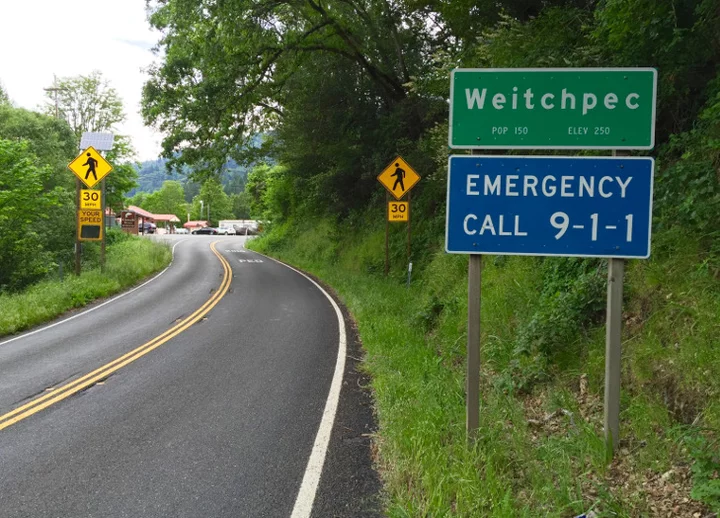


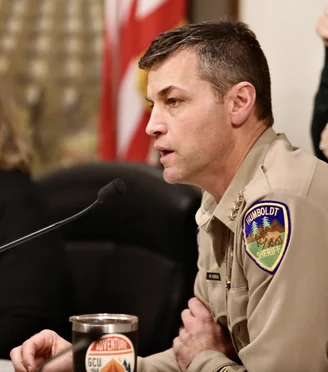
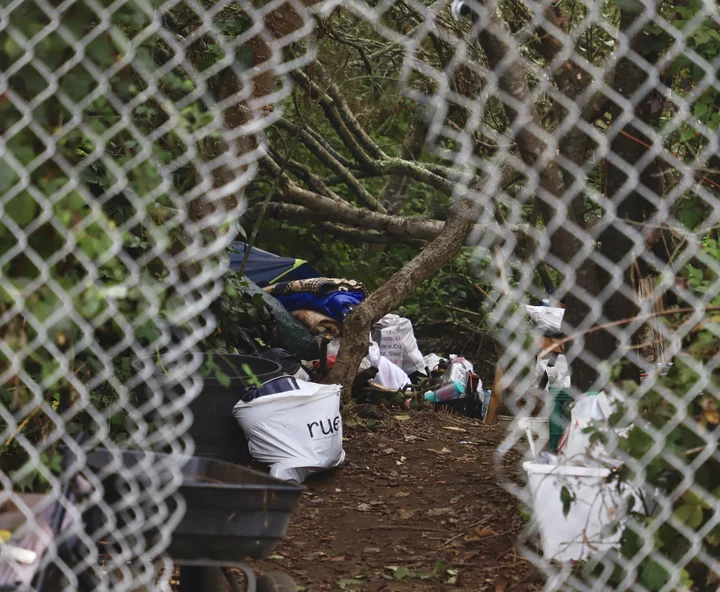
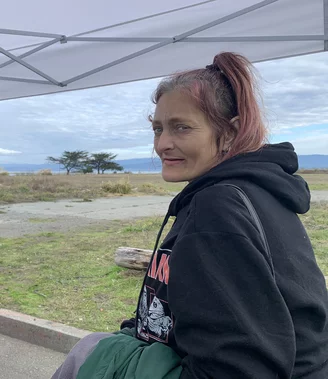
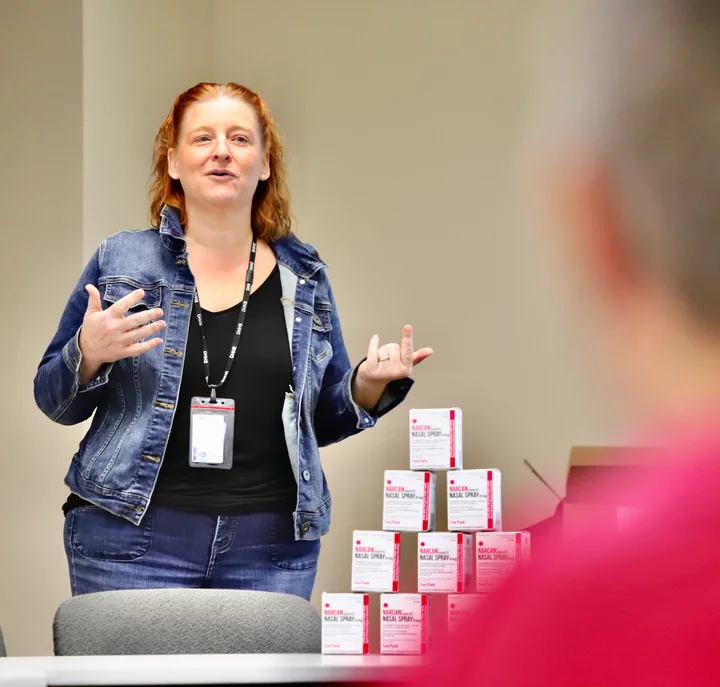
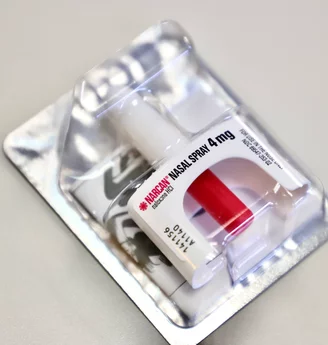

CLICK TO MANAGE